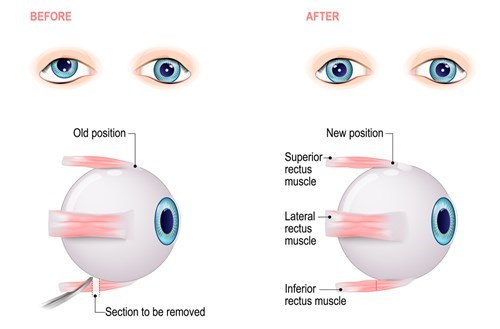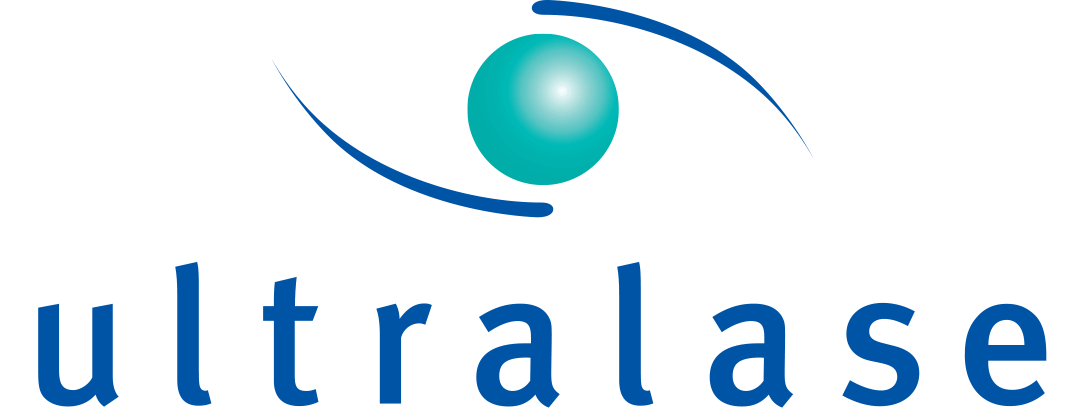What is Strabismus?
15 July 2019

Strabismos is the Greek word for "squinting.”
Strabismus is the medical term for crossed-eyes; referring to the abnormal alignment of the eyes. It is most commonly known as a squint.
For people who have strabismus, one eye will focus ahead directly at a viewed item, whilst the other eye will appear to be looking outward, upward or downward. This can occur in the same eye or alternating eyes.
Strabismus usually cultivates in children by the age of 3; but older children and adults can also develop the condition. Approximately 4% of adults and 2% of all children are affected by Strabismus.
When the eyes are misaligned, the brain will receive two different images. This usually causes double vision, but over time the brain learns to ignore the image from the crossed eye.
If left untreated however, eye turning can lead to permanently reduced vision in one eye because the brain will stop trying to interpret images from the affected eye. This is known as amblyopia or lazy eye.
The variations of strabismus include:
Esotropia: One eye turns in towards the nose
Exotropia: One eye turns outwards
Hypertropia: One eye turns upwards
Hypotropia: One eye turns downwards
Cyclotropia: Combination of the above
Did you know that it is believed that President Abraham Lincoln had strabismus? In some of his portraits you can see that his left eye tended to turn upward.
What causes strabismus?
The eye is made up of six external muscles (extraocular muscles) that are responsible for controlling the position and movement of the eye.
For normal binocular vision (vision using two eyes with overlapping fields of view), the position, neurological control and functioning of these muscles need to be perfectly synchronised in both eyes.
Strabismus occurs when there are problems with these extraocular muscles.
There are additional risk factors associated with strabismus, which include:
- Uncorrected refractive errors
- Cerebral palsy
- Down syndrome (20-60% of these patients are affected)
- Hydrocephalus (a congenital disease that results in a build-up of fluid in the brain)
- Brain tumours
- Stroke (the leading cause of strabismus in adults)
- Head injuries
- Neurological (nervous system) problems
- Graves' disease (overproduction of thyroid hormone)
What are the symptoms of strabismus?
The visible misalignment of the eyes is the most obvious symptom of strabismus; where one eye will turn in, out, up or down.
There are two degrees of strabismus. Large-angle strabismus is when the misalignment is very obvious and a less obvious misalignment is referred to as small-angle strabismus.
Large-angle strabismus does not tend to cause eye strain or headaches because there is no attempt by the brain to straighten the eyes. Small-angle strabismus however does.
Other symptoms of strabismus include:
- Eyes that do not move together
- Squinting or closing one eye in bright light
- Tilting or turning the head to look at an object
- Bumping into things due to limited depth perception
Can you treat strabismus?
Strabismus tends to be diagnosed in childhood. This is why it’s important take your children to regular eye examinations.
There are a few treatment options available to correct strabismus. These include:
Glasses
Glasses are usually the first step to correcting a squint and generally work when the squint is accommodative. In these cases the squint will usually disappear when the child is wearing the glasses and reappear when they are not.
Glasses work to reduce focusing effort to train the crossed eye to work harder, which in turn strengthens the muscles around it and straightens the ‘lazy’ eye.
In some cases this is the only treatment needed.
Surgery
Surgery for strabismus is a very common eye operation and is recommended if glasses are not effective.
The surgery itself involves moving or tightening the muscles that control eye movement, to allow the eyes to align correctly.
First a small incision is made through the conjunctiva (surface of the eye) to access the muscles. The muscles are then strengthened or moved to change its action with dissolvable stitches.
Most strabismus surgeries take less than two hours to perform; patients should be in and out of hospital on the same day.

Injections
Injections into the eye muscles are administered to weaken the eye muscles and help the eyes to line up. This isn’t a permanent solution and usually lasts no longer than 3 months.
If you or your child has been experiencing any of the symptoms mentioned, we advise that you book an eye examination at your earliest convenience.
Back to Blog
